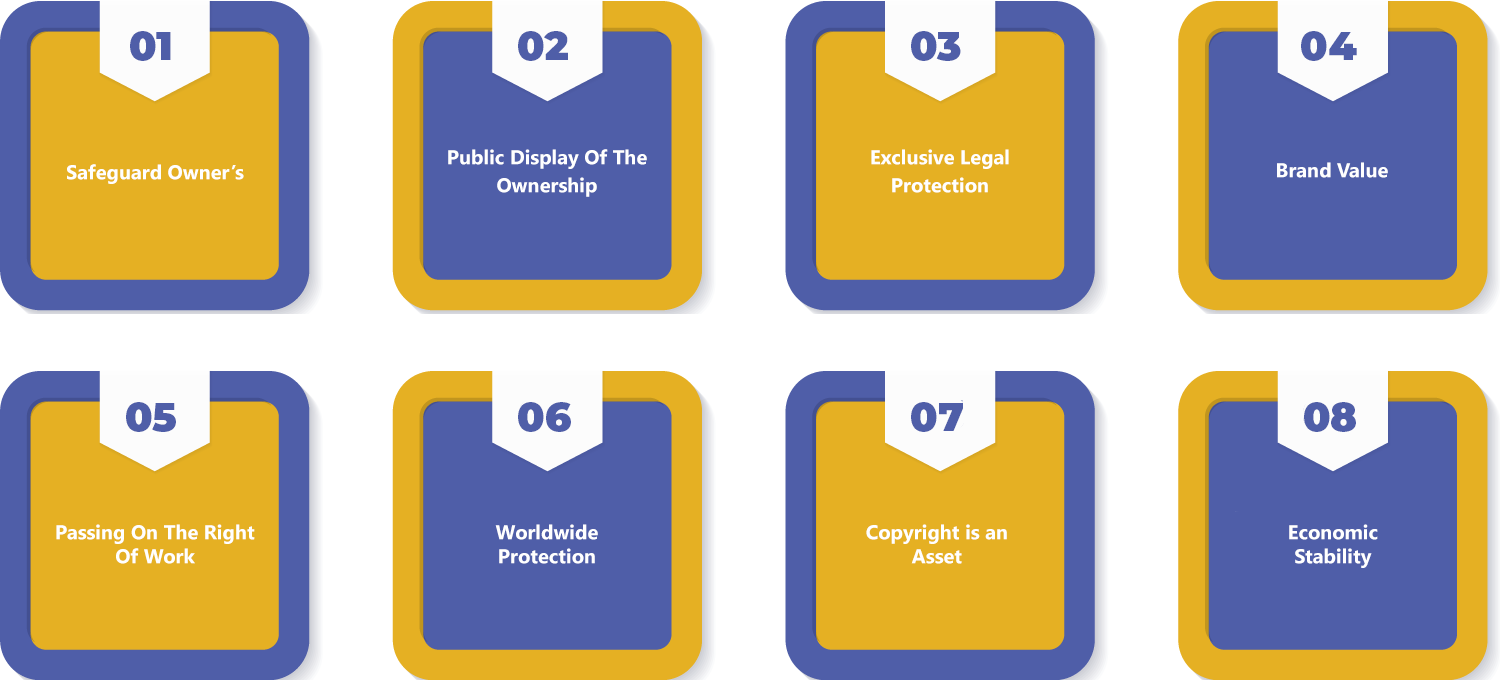An Overview of Copyright Objection
Copyright is an intellectual property rights that provides protection to the inventive creator or original work of the author. For getting the protection, it is necessary that the copyright must be registered. During the registration process of copyright, there is a probable chance that the Registrar might raise objection on the application of copyright due to several reasons. The objection can be raised for different reasons like in case if there is any similarity found in the copyright application and the existence of similar work. The Registrar can raise the copyright objection anytime within the time period of 30 days from the date of filing of copyright application.
What is Copyright?
Copyright is a kind of privilege given to the creator of an artistic work by the law under intellectual property rights. Copyrights are given protected under the “ Copyright Act, 1957”. Copyright is a bundle of rights which includes the right of adaptation, reproduction, and translation of the work that is granted by the law upon the authors and creators of literary, artistic, dramatic, musical works, sound recordings and the producers of the cinematographic films.
The objective of the Copyright registration is to give protection to the owners over the rights of their creations. The procedure of Copyright registration encourages the efforts of creators, authors, designers and artists and persuades them to do more such inventions and creations. At the same time, the registration prevents the unlawful use of the original work by any third person and rewards the creativity.
It is significant to mention that the registration of copyright helps the author to protect their ideas of original expression which must be in some creative form, but the idea itself is not protected. Thus, some creative form of the idea must be expressed so as to get the protection.
What are the benefits of Copyright protection?
The benefits of Copyright Registration are as follow:

- Safeguard Owner’s Creation
The Copyright owner gets an exclusive right with the registration of Copyright over the adaptation, reproduction, translation, distribution and dissemination of the work.
- Public Display Of The Ownership
The work of the creator shall be declared in the Copyright Office’s Catalog after getting registered and can be available to public. Copyright registration creates a display to the public regarding the ownership of the copyright holder and this enables the owner to take any legal action against the infringers of his creation in the court of law.
- Exclusive Legal Protection
Copyright registration gives the creators to enjoy exclusive legal protection over their work if it is reproduced without authorization.
- Brand value
The registration of Copyright gives it a brand value as it becomes a proof of the ownership and the author can use the same for the purposes of creating goodwill and also marketing.
- Passing On The Right Of Work
Copyright gives the authority to the creator where he can openly pass on the rights by selling, disclosing the work to various persons with the copyright protection.
- Worldwide Protection
If the work is copyrighted in India then it gives the privilege to the creator to work freely anywhere in the world.
- Copyright is an Asset
Copyright is under the intellectual property rights. It is considered as an intangible asset because it can further be franchised or sold.
- Economic Stability
Copyright registration ensures the economic stability of the creator as the creator will be competent to reproduce his art in whatever form.
What are the Works Covered under the Copyright Registration?
Copyright Registration can be done for the works that includes:-
- Artistic works,
- Literary works
- Music voice recordings.
- Sound recordings
- Producers of the Cinematograph Films,
- Musical works that includes any accompanying words
- Pictorial, sculptural and graphical works
- Dramatic works, including any accompanying music
- Architectural plans, drawings and actual buildings
- Pantomimes (Drama) and choreographic works
- Motion pictures and other audiovisual works
What is the procedure to file for the Copyright Registration?
The steps to follow for getting the Copyright Registration are as follows:-
- Step-1- To Create the User ID and Password
The applicant needs to create his own User ID and password for login before filing his application form for getting the Copyright registration. If the applicant is not registered during applying, then the applicant will have to choose for New User Registration.
- Step-2-Filing Application Form
The applicant has the option to either directly apply manually to the copyright office or all the way through an e-filing facility that is accessible on the official website i.e. (copyright.gov.in). Here, the copyright applicant can be the owner and can have the exclusive right for his work, he can be an author of the work or an authorized agent.
For Copyright Registration, an independent application shall be filed with the registrar together with the details on particulars of the work.
- Step 3-Examination Of Application
After the filing of the application, the next step is to examine the copyright application. After the getting the diary number, a waiting period of minimum 30 days is provided where the examiner of the copyright shall review the copyright application. After the examination is done, the process of Copyright Registration gets divided into two separate sections:-
1. If the Objections Are Raised
If someone has raised the objection against the applicant, in that case the letter is sent to both the parties and the Registrar gives them the reasonable opportunity to be heard. If upon hearing, the objection is rejected then the applicant can request for scrutiny and the procedure for discrepancy shall be followed.
2. If No Objections Are Raised
In case where no objections are raised, the examiner shall give his consent to review the application to find any discrepancy. But if no inconsistency arises, and all the important documents are provided together with the application then the applicant is permitted to proceed further with the subsequent step.
Moreover, in case the inconsistencies are found, the letter of discrepancy is delivered to the applicant. The applicant is obligated to reply on the same and on the basis of his reply, the registrar conducts the hearing. Once the problem is resolved, the applicant is permitted to move further. However, if the difference is not resolved, the application shall be rejected with a rejection letter to the applicant.
- Step 4: - Issuance of Registration Certificate
The last step in the process is the copyright registration certificate issued by the Registrar. During the Registration step, the Registrar can ask for more documents and information.
It is pertinent to note that the Copyright registration shall complete when the applicant is granted the Extracts of the Register of Copyrights (ROC).
What is a Copyright Objection?
Copyright objection means an objection raised by the Registrar on the Copyright application.
What are the reasons for raising Copyright objection?
There can be various reasons for raising the Copyright Objection and the major reasons can be as given below:
- Objection can be raised in case of any similarity in work with the existing work or
- Duplication of the work with another's work.
What is the Process for replying to Copyright Objection in India?
The steps that are required to follow in order to file reply to the copyright objection in India are mentioned below:
- Step1: To analyze the copyright objection raised by the Registrar
The first step towards replying to the copyright objection is to do a proper analysis of the copyright objection that is raised by the registrar and recognize the reason behind the objection of the application and the relevant section of the act under which it is done.
- Step 2: Draft a Reply
The applicant is required to draft a reply to the copyright objection. This ought to be done very cautiously and should include the appropriate judgments and the rules of all the laws that are supporting the case. It is important for the applicant to mention strong reasons why his copyright application should get copyrighted.
- Step 3: File the Reply
After the applicant is done drafting his convincing reply, he is required to file his reply to the copyright objection together with all the essential documents. The applicant has to file his reply with the Registrar of the copyright within the time period of 30 days from the date of issuance of the discrepancy letter objecting the copyright.
- Step 4: Copyright Registration
In case the Registrar of copyright after checking the reply finds the answers to copyright objection valid, he shall set aside the objections on the copyright application. The Registrar shall further continue with the process of registration of the copyright by issuing a Certificate of Copyright Registration to the author or the creator of the original work.
What are the required Documents for replying to Copyright Objection in India?
The documents that are required to file reply to copyright objection are as follows:
- The discrepancy letter as is issued by the Registrar of Copyright.
- The supporting documents for reply.
- The Copy of application for registration.
- Affidavit, if required.
What are the Benefits for Filing a Reply to Copyright Objection in India?
The reply to the objections on copyright is submitted to the registrar of the copyright with the requests for clarifying with respect to the terms of the objections raised. It is important to file a reply to the objection of copyright in India. Some of the benefits of filing the reply are as given below:
- It is necessary to quickly reply to the copyright objections so as to retain the legal rightof the work. The creator of the work should fight for his hard work and must necessarily reply to the objections.
- When the Registrar raises an objection with respect to the application, it is important to file the reply for the same. In case if the reply is not submitted, then the registrar of copyright has the right to cancel the copyright application and the application shall be listed as rejected on the bulletin of copyright. Hence, it is important for the applicant to file the reply in time so as to avoid such situation.
- A copyright objection letter is a kind of legal document. It requires proper drafting skills and legal expertise for framing the reply in the legal letter. There is no set format or standard for framing a reply to the copyright objection. The application may be drafted either by the applicant personally or he can utilize the services of a legal expert to help him reply to the copyright objection.
It is important to note that the reply must contain strong reasons with supported case laws so as to convince the registrar for setting aside the objection. Our legal team in SWARIT has the best legal specialists who are experts in framing such reply.
What happens in not filing the reply to the copyright objection?
In case if the applicant does not file his reply to the copyright objection within the given fixed period of time, then the registrar has the right to cancel the copyright application and so shall the status of application be updated as “Rejected”. Therefore, it is compulsory to file a reply to copyright objection so as to avoid such actions by the registrar.
Frequently Asked Questions
The Copyright Act, 1957 grants protection to the artistic, literary, musical, and dramatic works of the creator from any unauthorized use. Copyright provides protection to the expressions of the creative work and not just the ideas.
Copyright Registration can be applied either manually or through the website. It is important to take Copyright registration if you want to protect your creative work from any kind of infringement.
Copyright is valid for the whole lifetime of the author or creator and for 60 years beyond the death of the creator.
It may take around 2 to 3 months to get your copyright registered in the normal course with the cooperation of the applicant for speedy disposal of the issue.
It is an objection raised by the Registrar of the Copyright in cases where the applicant’s copyright is similar to someone else’s work already existing in the market.
It is very essential to file the reply to the Copyright Objection for the author so as to retain his creative work and have the legal protection over his creation.
The main essence of replying is to convince the Registrar regarding the author’s creative work being original and to get the copyright registered. Hence, once the creative work gets registered the author can have the legal protection against any kind of infringement in future.


